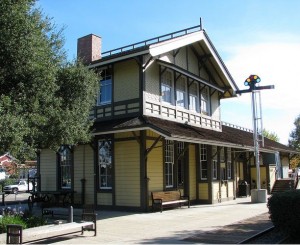
Danville has been many things over the past 150 years, growing from a small farming community to a railroad town and sleepy suburb to, today, an upscale city with a thriving commercial base.
But Danville never forgot its past. The 121-year-old railroad station is now the Museum of the San Ramon Valley. The historic Danville Hotel is a retail hub. The Grange Hall, built in 1874, is a community theater.
Danville is a busy community of 42,000 residents in central Contra Costa County. Located 30 miles east of San Francisco at the base of Mount Diablo, it is bisected by Interstate 680, with the cities of Alamo to the north and San Ramon to the south.
Amid the hustle and bustle of the East Bay, Danville has managed to keep its small-town charm, in part by hosting a variety of community events throughout the year. Farmers’ markets and street fairs occur regularly, and its Fourth of July celebration is one of the largest in the Bay Area. At Christmastime the wealth of holiday decorations draws visitors from near and far.
The 12-mile Iron Horse Regional Trail, once the route of the Southern Pacific railroad, runs through the center of town. It’s a rare treasure for walkers and bicyclists.
‘PEOPLE MOVE HERE FOR THE SCHOOLS’
Danville’s schools, including Monte Vista High School and San Ramon Valley High School, are among the highest-rated in California. The town is also home to the private Athenian School.
“People move here for the schools,” said Ellen Anderson, a senior vice president and branch executive of Pacific Union International’s Contra Costa County region. “And also for the weather. There’s no fog here. It’s beautiful.”
On the western edge of Danville is Tao House, once the home of Nobel Prize-winning playwright Eugene O’Neill. He lived there from 1937 to 1944, and today the home is a historic site operated by the National Park Service.
O’Neill relished the peace and quiet of Danville and called Tao House “my final home and harbor.”
He wrote some of his most popular plays while living there, including “The Iceman Cometh” and “Long Day’s Journey Into Night.” Several lines from the latter are the basis of a bronze sculpture that stands in a park across from the Danville Library on Front Street.
‘TWO SIDES TO DANVILLE’
“There are two sides to Danville,” Anderson said. “The west side is the older part of town. The homes there were built in the 1950s and ’60s, while the east side, on the other side of 680, is where the city has grown in the last decade. That’s where you have the planned subdivisions, such as Blackhawk.”
Home values in Danville appreciated rapidly during the real-estate boom of the last decade, then lost 30 to 40 percent of their value from 2007 to 2011.
Prices have started rising again — up 2 percent so far this year — and Anderson said she expects similar growth next year. Meanwhile, the inventory of homes for sales remains exceptionally tight.
Danville homes for sale are priced “all over the map,” she said. “We’ve got everything from townhouses selling for $500,000 to mansions selling for $10 million and higher.
“That’s Danville. We’ve got families with modest incomes, and we’ve got millionaires.”
(Photo of Danville’s old railroad station by Jack Snell, via Flickr.)
